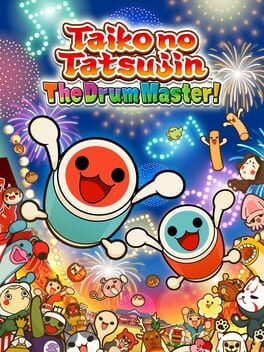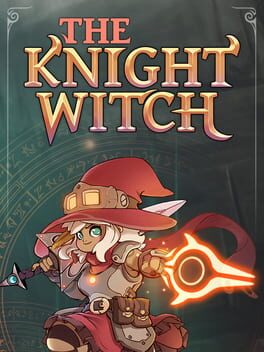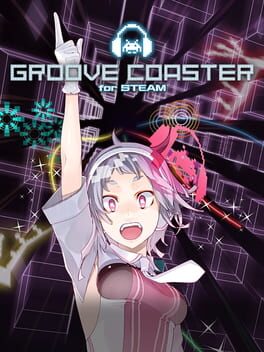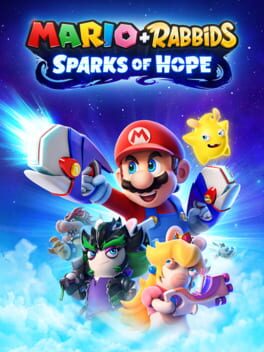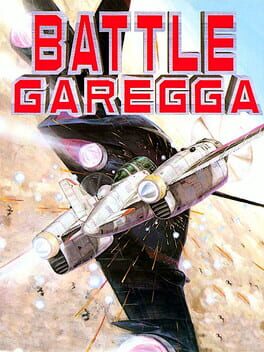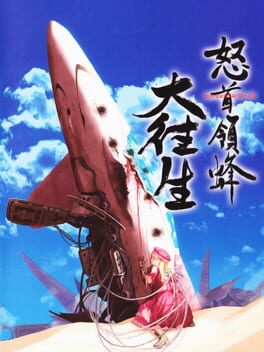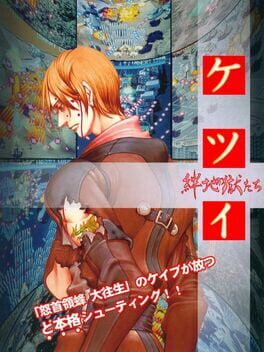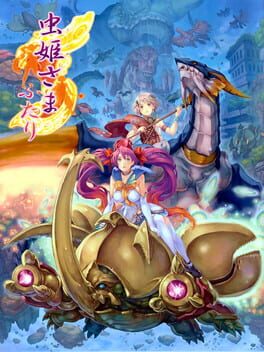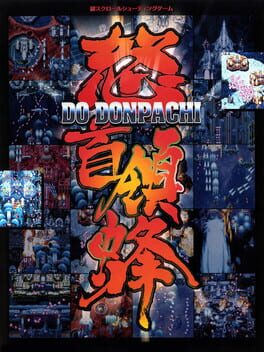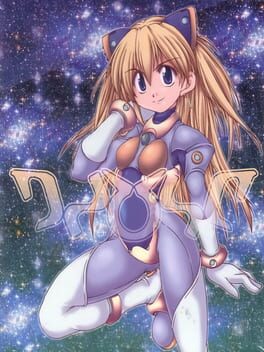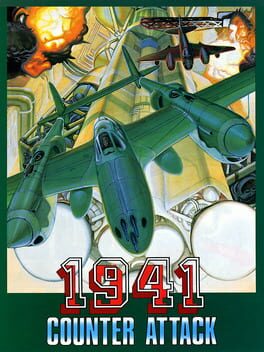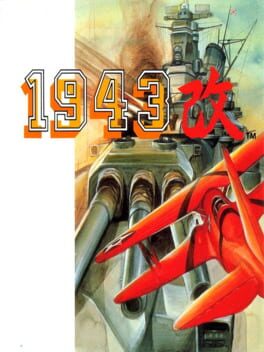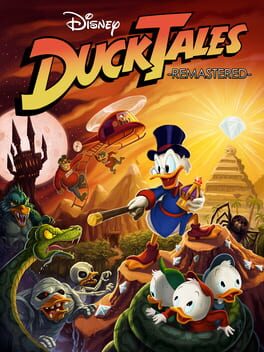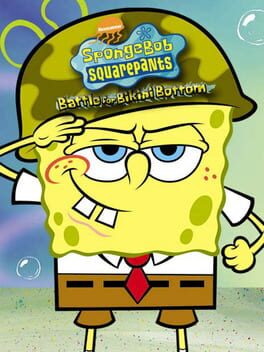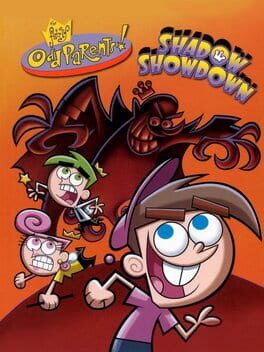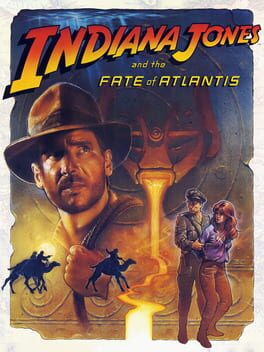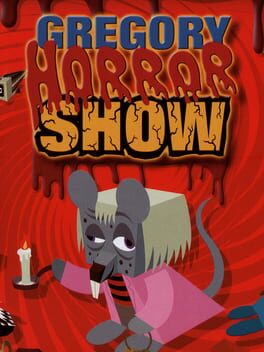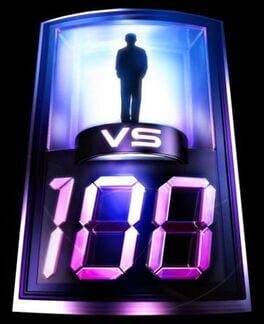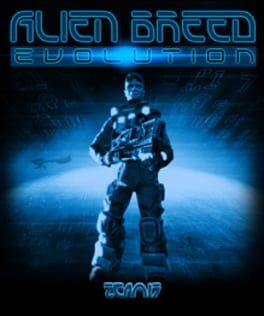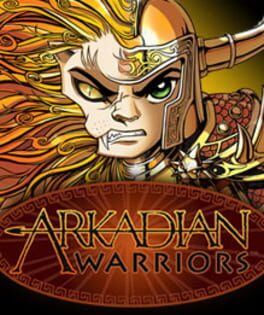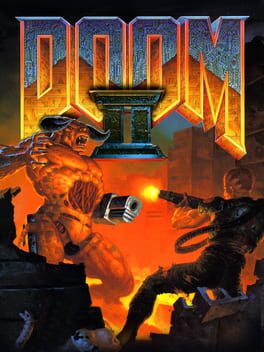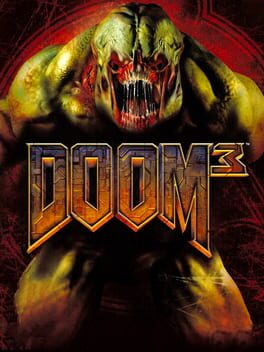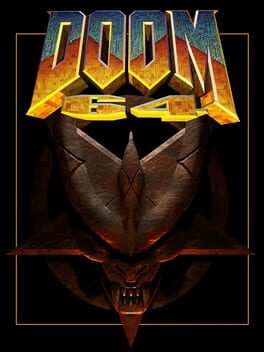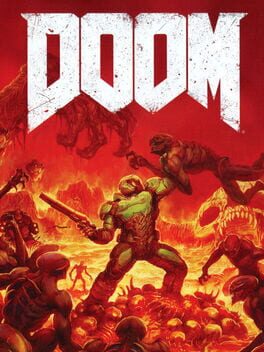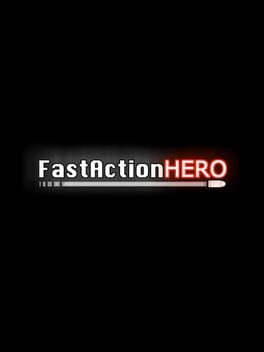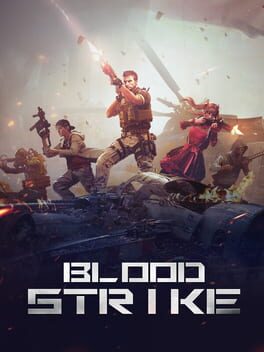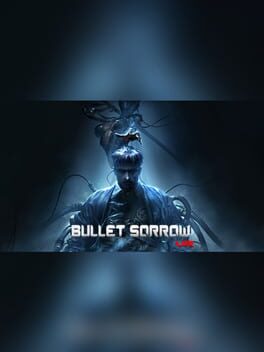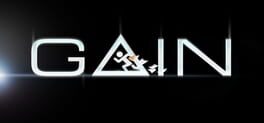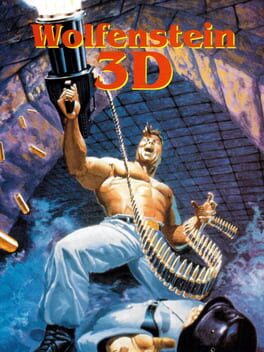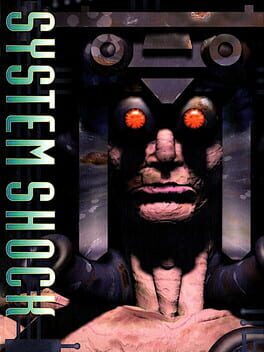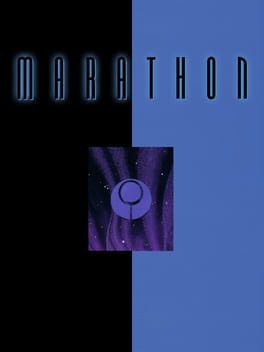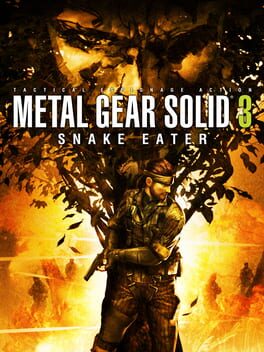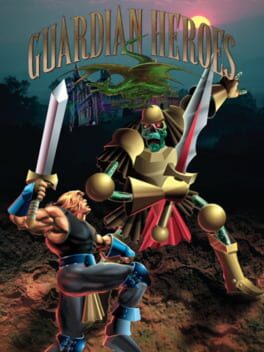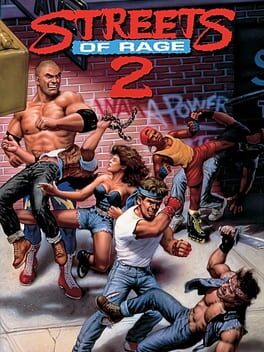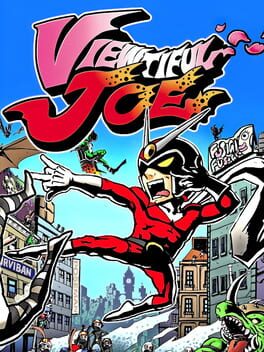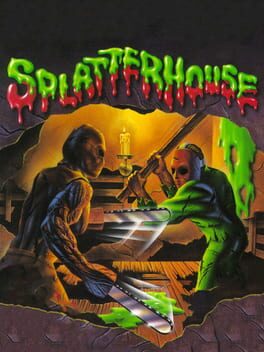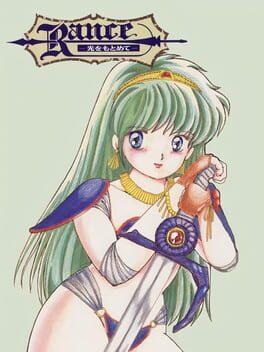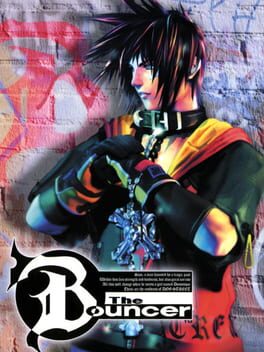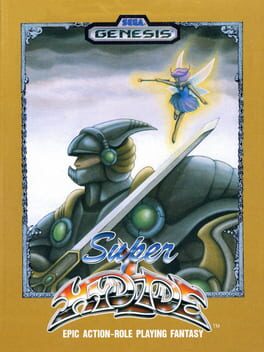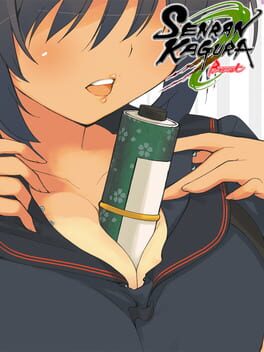Funkermonster
BACKER
133 reviews liked by Funkermonster
Compared to more recent versions of Taiko no Tatsujin, this one is extremely barebones. I thought a newer release would have similar or more features, not less. Drum Session for PS4 has a super cool bingo card feature, Drum n’ Fun for Switch has party games (and may also have the bingo cards?). This one is just a list of songs, the end. If it weren't for gamepass, I definitely wouldn't have bothered.
sad to see taikos debut on xbox/pc being something like this, just a halfassed release (to meet gamepass criteria??) that its still broken on pc and only had 2 new songs added into the series; feels unfair to draw comparisons between the last releases of the franchise and all the flavor, thematic investment and uniqueness with hit-n-miss new game modes that most ds/psp/wii games had added onto them.
...and yet this entry has the sole potential of making taiko even larger just because it has modding potential. we'll see how it ends up.
...and yet this entry has the sole potential of making taiko even larger just because it has modding potential. we'll see how it ends up.
The Knight Witch
2022
Cute and quaint twin-stick shooter with personality abounding between the art design and soundtrack, yet held back by disappointing metroidvania rewards and middling story. I enjoyed my time with it but can't help feel like there was wasted potential, or perhaps it was completely mislabeled as a metroidvania and some of that focus would have been better spent on other aspects or levels of the game - game developers make a water level fun challenge (impossible).
Groove Coaster may be an arcade rhythm game in terms of genre, but I'm personally leaning more towards calling it an audiovisual experience. Have you ever wanted to play a rhythm game inside of a Windows XP Media Player visualizer, cranked up to 11? Groove Coaster provides that in spades, while also being a really fun rhythm game too.
In Groove Coaster, you character travels along a literal track, lined with beats to hit along the way. As you coast along the rail, you'll press buttons and flick the analog sticks to the beat of the music. One of the more admirable quirks of GC is the "AD-LIB", a type of beat that's spread throughout each song, but invisible to the player. To hit them, you press any button to perform a beat wherever you think they may be, like a gap between visible beats, or a part of the song not represented by visible beats. I really like this feature in concept, but what it inevitably leads to is you constantly tapping your buttons to whatever the percussion is in the background. This strategy only tends to work on Easy/Normal difficulty however, on higher difficulties like Hard/Extreme, you'll need to sniff 'em out some other way, like with items.
Items in Groove Coaster are...odd. There's a handful of them to unlock, and each one gives you a specific benefit, like being able to miss 10 beats without losing your chain, or making the AD-LIB beats visible. You can only use one of these items at a time, but they don't cost anything to use. It's like an optional safety net you can use with no repercussions. I suppose it's good for casual play, and they won't help that much on higher difficulties, but I still think that integrating the items with the game's currency system would've been much better.
The game uses its currency in the mission list, a fine (but flawed) addition to this game. Fulfilling criteria will unlock more characters, items, and even new songs. You can spend in-game currency to skip some of these missions. That's its only use (some missions can also literally have the goal of "spend currency"). The other thing that really irks me about the missions is that their totals are not cumulative, at least, not until you actually unlock the specific mission. Played a song five times and then later unlocked a mission that wants you to play it three times? You get to play that song three more times. Unlocks could move a hell of a lot faster if the game just acknowledged what I've already accomplished.
Going back to the visuals, I just wanna admire how much GC accomplishes with so little. Wireframe shapes and objects, low-poly inanimate silhouette figures of characters, and flashing lights/colors abound. Mix in the virtual track that your avatar follows, add some fancy disorienting camera pans, and the game takes you for a wildly unique roller coaster ride on every individual song. It's kind of an assault on my eyeballs, but it's so cool that I can't look away.
Overall, while I have my gripes with its structure, Groove Coaster is visually stunning, and a solid rhythm game. I'm glad it gets to join the pantheon of Japanese rhythm games that I play at my leisure.
(PS: The menus have a "navigator", basically an announcer, and one of the game's latest updates added Gawr Gura as a navigator for free. Having the Apex Predator God Rhythm Gamer Shark Vtuber praise and encourage my rhythm game skills is something I didn't realize I wanted in life, thanks Gura.)
In Groove Coaster, you character travels along a literal track, lined with beats to hit along the way. As you coast along the rail, you'll press buttons and flick the analog sticks to the beat of the music. One of the more admirable quirks of GC is the "AD-LIB", a type of beat that's spread throughout each song, but invisible to the player. To hit them, you press any button to perform a beat wherever you think they may be, like a gap between visible beats, or a part of the song not represented by visible beats. I really like this feature in concept, but what it inevitably leads to is you constantly tapping your buttons to whatever the percussion is in the background. This strategy only tends to work on Easy/Normal difficulty however, on higher difficulties like Hard/Extreme, you'll need to sniff 'em out some other way, like with items.
Items in Groove Coaster are...odd. There's a handful of them to unlock, and each one gives you a specific benefit, like being able to miss 10 beats without losing your chain, or making the AD-LIB beats visible. You can only use one of these items at a time, but they don't cost anything to use. It's like an optional safety net you can use with no repercussions. I suppose it's good for casual play, and they won't help that much on higher difficulties, but I still think that integrating the items with the game's currency system would've been much better.
The game uses its currency in the mission list, a fine (but flawed) addition to this game. Fulfilling criteria will unlock more characters, items, and even new songs. You can spend in-game currency to skip some of these missions. That's its only use (some missions can also literally have the goal of "spend currency"). The other thing that really irks me about the missions is that their totals are not cumulative, at least, not until you actually unlock the specific mission. Played a song five times and then later unlocked a mission that wants you to play it three times? You get to play that song three more times. Unlocks could move a hell of a lot faster if the game just acknowledged what I've already accomplished.
Going back to the visuals, I just wanna admire how much GC accomplishes with so little. Wireframe shapes and objects, low-poly inanimate silhouette figures of characters, and flashing lights/colors abound. Mix in the virtual track that your avatar follows, add some fancy disorienting camera pans, and the game takes you for a wildly unique roller coaster ride on every individual song. It's kind of an assault on my eyeballs, but it's so cool that I can't look away.
Overall, while I have my gripes with its structure, Groove Coaster is visually stunning, and a solid rhythm game. I'm glad it gets to join the pantheon of Japanese rhythm games that I play at my leisure.
(PS: The menus have a "navigator", basically an announcer, and one of the game's latest updates added Gawr Gura as a navigator for free. Having the Apex Predator God Rhythm Gamer Shark Vtuber praise and encourage my rhythm game skills is something I didn't realize I wanted in life, thanks Gura.)
When I picked up this game, I didn't really know what to expect. I don't know a thing about vocaloids or Touhou and I've never played previous iterations in arcades or on phones, so I was taking quite a risk. Even on sale, Groove Coaster cost me $35 with loads of DLC as an option too (the game is normally $50), which is way more than I typically pay for digital games!. Luckily, I found myself hooked in pretty quickly and grew to appreciate both its choice in music and its fast paced, extremely flashy gameplay. If you like rhythm games and want one that feels designed with controllers in mind, this is the one to go for.
Groove Coaster's gameplay is right in its name; your job is to follow your avatar of choice as it moves along a literal track and press buttons in time with the notes that appear. All you need are two buttons and two sticks, but the game gets a lot of mileage out of them. You'll be flicking and jiggling sticks, holding buttons, pushing/pressing in unison, and doing tons of tapping. It's frantic and intense in all the right ways while never feeling like it's going out of rhythm or isn't meant for a controller. As much as I like Taiko no Tatsujin (which is probably the closest rhythm game mechanically to this one), it never feels 100% right on a controller, so I was pleasantly surprised to see Groove Coaster feel so natural in comparison. The game does an excellent job of slowly doling out new notes over the course of each difficulty level, too. Easy mode only has you doing the most basic of notes and each step up adds some of the others in, giving you a natural curve where you get time to learn everything you need to know. You can also equip items to make things easier or harder, such as items that nullify a number of mistakes or give you more coins for missions at the cost of a stricter win condition. These items don't cost anything to use and they don't prevent you from getting S ranks or mission progress, so there's no reason to be shy about trying them.
Equally impressive are Groove Coaster's visuals, which are incredible to an almost unbelievable degree. Every single song has completely unique visuals, all of which tie into the song both thematically and mechanically. For example, the song "Lost Colors" starts you off with dull, colorless notes that gradually gain more colors as the song goes on. It's a great bit of visual storytelling in a genre that you wouldn't expect it from and it even bolsters the gameplay too. As much as they're out to blow your mind, the visuals are also out to kill you, and the game has no problem distracting you with flashing lights, images that obscure the track (the Misc genre tracks in particular love to do this), and sudden twists and turns that mess up your timing. It sounds like it'd be cheap and frustrating, but since you have plenty of leeway to succeed in a song and the game makes its intent obvious from the get-go, this instead just feels like a cheeky bit of fun and a clever way to challenge players.
Even with all its DLC, the base game still offers an impressive 100 songs, 29 of which are unlockable through some of the game's 300 missions. It's awesome to see this much unlockable content in a modern video game, but I wish the implementation of the missions was done in a way that felt more varied and interesting. Missions are completed through playing specific songs, completing multiple songs in a genre under certain conditions, or by simply buying your way past them with coins. This is all fine and good, but for whatever reason, the game loves to repeat objectives and genres for many of the unlockable songs specifically. Several of them are locked behind the "Complete 10 songs in the Original genre with a full chain" missions, which is obnoxious for multiple reasons. While a good batch of songs, there aren't that many songs in the Original genre, so you'll definitely be replaying those songs many times (I swear if I have to play Kimi no Starlight Road one more time!). The Misc genre also ends up in a similar situation where it gets reused for challenges constantly, except that genre has even fewer songs! It's a strange choice for sure and focusing on the missions means you'll have to neglect many other songs, so I recommend balancing out your playlist and taking breaks from missions every time they want you to play Link Link Fever yet again or whatever, just so you get to make use of that huge tracklist.
Full chains are a pain that can turn the experience from an immersive one to one that's the musical equivalent of a checklist, and that just plain stinks. You see, to get a full chain, you need to hit every single note in a song, including the "Ad-lib" notes that are completely invisible. You're meant to figure these out based on the rhythm of the song, but considering that a typical song has near or more than a thousand notes, it's very easy to miss them in the heat of the action. There's an item that makes them visible, but with that on, you can no longer use an item to nullify misses, meaning you need to be absolutely perfect. Unless you're really good at the game, you'll likely want to stick to Easy and Normal songs for full chains, which means even more repetition in that you'll be replaying the same songs on the same difficulties. Ad-libs are an interesting idea on paper and probably make more sense in the arcades as a way for skilled players to flaunt their knowledge, but at home, they just feel like someone slapped a collectahon checklist onto this rhythm game and I found myself wishing they weren't a thing.
With an impressive variety of songs, including picks from anime like Neon Genesis Evangelion and Gurren Lagann, tons of Touhou remixes, as well as music from various Taito games like Darius, Bubble Bobble, and even Lufia 2, Groove Coaster feels like one of the best rhythm games in years. It plays fantastically, has what may be the best visuals to ever grace a game in the genre, and is chock full of content. The asking price is steep, but this is one that's still absolutely worth buying. I get the impression this game went somewhat under the radar and that's a shame considering how rare rhythm games tend to be nowadays. If you're like me and you wish the genre had more of a presence, check Groove Coaster out and you'll quickly learn that the genre still has life in it yet.
Groove Coaster's gameplay is right in its name; your job is to follow your avatar of choice as it moves along a literal track and press buttons in time with the notes that appear. All you need are two buttons and two sticks, but the game gets a lot of mileage out of them. You'll be flicking and jiggling sticks, holding buttons, pushing/pressing in unison, and doing tons of tapping. It's frantic and intense in all the right ways while never feeling like it's going out of rhythm or isn't meant for a controller. As much as I like Taiko no Tatsujin (which is probably the closest rhythm game mechanically to this one), it never feels 100% right on a controller, so I was pleasantly surprised to see Groove Coaster feel so natural in comparison. The game does an excellent job of slowly doling out new notes over the course of each difficulty level, too. Easy mode only has you doing the most basic of notes and each step up adds some of the others in, giving you a natural curve where you get time to learn everything you need to know. You can also equip items to make things easier or harder, such as items that nullify a number of mistakes or give you more coins for missions at the cost of a stricter win condition. These items don't cost anything to use and they don't prevent you from getting S ranks or mission progress, so there's no reason to be shy about trying them.
Equally impressive are Groove Coaster's visuals, which are incredible to an almost unbelievable degree. Every single song has completely unique visuals, all of which tie into the song both thematically and mechanically. For example, the song "Lost Colors" starts you off with dull, colorless notes that gradually gain more colors as the song goes on. It's a great bit of visual storytelling in a genre that you wouldn't expect it from and it even bolsters the gameplay too. As much as they're out to blow your mind, the visuals are also out to kill you, and the game has no problem distracting you with flashing lights, images that obscure the track (the Misc genre tracks in particular love to do this), and sudden twists and turns that mess up your timing. It sounds like it'd be cheap and frustrating, but since you have plenty of leeway to succeed in a song and the game makes its intent obvious from the get-go, this instead just feels like a cheeky bit of fun and a clever way to challenge players.
Even with all its DLC, the base game still offers an impressive 100 songs, 29 of which are unlockable through some of the game's 300 missions. It's awesome to see this much unlockable content in a modern video game, but I wish the implementation of the missions was done in a way that felt more varied and interesting. Missions are completed through playing specific songs, completing multiple songs in a genre under certain conditions, or by simply buying your way past them with coins. This is all fine and good, but for whatever reason, the game loves to repeat objectives and genres for many of the unlockable songs specifically. Several of them are locked behind the "Complete 10 songs in the Original genre with a full chain" missions, which is obnoxious for multiple reasons. While a good batch of songs, there aren't that many songs in the Original genre, so you'll definitely be replaying those songs many times (I swear if I have to play Kimi no Starlight Road one more time!). The Misc genre also ends up in a similar situation where it gets reused for challenges constantly, except that genre has even fewer songs! It's a strange choice for sure and focusing on the missions means you'll have to neglect many other songs, so I recommend balancing out your playlist and taking breaks from missions every time they want you to play Link Link Fever yet again or whatever, just so you get to make use of that huge tracklist.
Full chains are a pain that can turn the experience from an immersive one to one that's the musical equivalent of a checklist, and that just plain stinks. You see, to get a full chain, you need to hit every single note in a song, including the "Ad-lib" notes that are completely invisible. You're meant to figure these out based on the rhythm of the song, but considering that a typical song has near or more than a thousand notes, it's very easy to miss them in the heat of the action. There's an item that makes them visible, but with that on, you can no longer use an item to nullify misses, meaning you need to be absolutely perfect. Unless you're really good at the game, you'll likely want to stick to Easy and Normal songs for full chains, which means even more repetition in that you'll be replaying the same songs on the same difficulties. Ad-libs are an interesting idea on paper and probably make more sense in the arcades as a way for skilled players to flaunt their knowledge, but at home, they just feel like someone slapped a collectahon checklist onto this rhythm game and I found myself wishing they weren't a thing.
With an impressive variety of songs, including picks from anime like Neon Genesis Evangelion and Gurren Lagann, tons of Touhou remixes, as well as music from various Taito games like Darius, Bubble Bobble, and even Lufia 2, Groove Coaster feels like one of the best rhythm games in years. It plays fantastically, has what may be the best visuals to ever grace a game in the genre, and is chock full of content. The asking price is steep, but this is one that's still absolutely worth buying. I get the impression this game went somewhat under the radar and that's a shame considering how rare rhythm games tend to be nowadays. If you're like me and you wish the genre had more of a presence, check Groove Coaster out and you'll quickly learn that the genre still has life in it yet.
Unicorn Overlord
2024
Unicorn Overlord is sort of the reverse of 13 Sentinels where instead of the strong emphasis on story and weak gameplay, Unicorn emphasizes the gameplay and less elsewhere.
The gameplay loop was quite addicting to me. There's a lot of freedom in being able to go wherever you want unless it's simple gated by a main story battle which isn't all that many. You can pretty much explore entire regions when you first enter assuming you're strong enough to "win" the fights against the wandering enemies in the overworld.
Repairing and developing towns are pretty simple, but oddly satisfying. Being able to see visual changes after you repair them is a nice touch.
The combat is different from typical SRPGs where you're fighting on grids and strictly turn-based. Unicorn has essentially 2 phases during combat. The first is very similar to RTS (with pause) games where selecting locations where to move the units. As they slowly make their way across the map, the battle timer and enemy units will continue to move. Going to the various menu will pause the game however so it's not too stressful.
Once a unit gets into contact with an enemy unit, the screen transitions to the actual combat scene where you'll see the two units duke it out. Their actions are based on the A.I. tactics you set for them. The fight ends when they have depleted all of the Passive and Active points regardless if both sides are still alive.
Most of the strategy during battle involves who to send out and where to send them out. You can adjust tactics and unit formation just before you initiate a fight. A preview of the results is handy to show if you need to make any adjustments. Despite allied unit actions are based on the tactics A.I., the tactics in Unicorn has decent depth to it so that there's a lot of flexibility and control over what the characters can do. It has a similar complexity and depth to FFXII's gambits.
The main victory condition for 99% of the battle is just to claim the enemy base. Along the way, you can claim smaller bases to establish different deployment locations. There's are terrain issues that needs to be considered as well as traps on the ground. Most maps aren't too complex, but are varied enough that I'm pretty satisfied.
A good chunk of the game time is in the preparation stage outside of the battle. Fine tuning tactics and unit formation including equipment is fun, but also takes up a lot of time.
Graphics is standard Vanillaware which is good. The 5 main regions have varied environments and are nice to see.
The soundtrack is similar to Basiscape's other works. They do sound good in-game, but there's only a few that were memorable to me outside of the game.
The story is one of the weakest parts of the game. It's simple, straightforward, predicable and isn't all that special. It kept my attention, but that's pretty much it. It doesn't really get much better after the early hours. Disappointing, but also expected based on the game structure.
I did enjoy the sidequest stories a little more since they are more character driven, but largely not that remarkable either. Many of the stories get resolved in just one battle and feels very isolated from the main conflict outside of the obvious connections.
The character bloat has left me with mixed feelings. I like nearly all of them, but they have little depth or character development. Rapport side conversations between the characters does help flesh them out more, but not enough for me. It's very much the quantity over quality when it comes to the character.
Despite my issues with the game, it is very fun and the emphasis on unit and character setups over complex battles is something I enjoy.
It's a pretty long game too since it took me 70 hours on Expert to clear every quest in the game.
For those wondering, the demo that covers the first 7 hours of the game is a very good indicator of what to expect for the remaining game. From the gameplay mechanics to the story beats.
The gameplay loop was quite addicting to me. There's a lot of freedom in being able to go wherever you want unless it's simple gated by a main story battle which isn't all that many. You can pretty much explore entire regions when you first enter assuming you're strong enough to "win" the fights against the wandering enemies in the overworld.
Repairing and developing towns are pretty simple, but oddly satisfying. Being able to see visual changes after you repair them is a nice touch.
The combat is different from typical SRPGs where you're fighting on grids and strictly turn-based. Unicorn has essentially 2 phases during combat. The first is very similar to RTS (with pause) games where selecting locations where to move the units. As they slowly make their way across the map, the battle timer and enemy units will continue to move. Going to the various menu will pause the game however so it's not too stressful.
Once a unit gets into contact with an enemy unit, the screen transitions to the actual combat scene where you'll see the two units duke it out. Their actions are based on the A.I. tactics you set for them. The fight ends when they have depleted all of the Passive and Active points regardless if both sides are still alive.
Most of the strategy during battle involves who to send out and where to send them out. You can adjust tactics and unit formation just before you initiate a fight. A preview of the results is handy to show if you need to make any adjustments. Despite allied unit actions are based on the tactics A.I., the tactics in Unicorn has decent depth to it so that there's a lot of flexibility and control over what the characters can do. It has a similar complexity and depth to FFXII's gambits.
The main victory condition for 99% of the battle is just to claim the enemy base. Along the way, you can claim smaller bases to establish different deployment locations. There's are terrain issues that needs to be considered as well as traps on the ground. Most maps aren't too complex, but are varied enough that I'm pretty satisfied.
A good chunk of the game time is in the preparation stage outside of the battle. Fine tuning tactics and unit formation including equipment is fun, but also takes up a lot of time.
Graphics is standard Vanillaware which is good. The 5 main regions have varied environments and are nice to see.
The soundtrack is similar to Basiscape's other works. They do sound good in-game, but there's only a few that were memorable to me outside of the game.
The story is one of the weakest parts of the game. It's simple, straightforward, predicable and isn't all that special. It kept my attention, but that's pretty much it. It doesn't really get much better after the early hours. Disappointing, but also expected based on the game structure.
I did enjoy the sidequest stories a little more since they are more character driven, but largely not that remarkable either. Many of the stories get resolved in just one battle and feels very isolated from the main conflict outside of the obvious connections.
The character bloat has left me with mixed feelings. I like nearly all of them, but they have little depth or character development. Rapport side conversations between the characters does help flesh them out more, but not enough for me. It's very much the quantity over quality when it comes to the character.
Despite my issues with the game, it is very fun and the emphasis on unit and character setups over complex battles is something I enjoy.
It's a pretty long game too since it took me 70 hours on Expert to clear every quest in the game.
For those wondering, the demo that covers the first 7 hours of the game is a very good indicator of what to expect for the remaining game. From the gameplay mechanics to the story beats.
A bit of a letdown, but still good! It's more of a lateral move from the first Mario + Rabbids rather than an improvement.
PROS:
- The game allows you to have any configuration for your team, whereas the first game forced you to have Mario and at least one Rabbid at all times. This is a MASSIVE improvement and was easily the worst aspect of the first game.
- Sparks are great! There are a bunch of cool uses for them, and the ability to customize which character has which abilities before any match was a very good choice, especially once you make a bit of progress and can put two on each teammate. The sparks that summon enemy-type characters to your side are the biggest addition here, providing the most substantial change to the combat this time around.
- Music is consistently great throughout, though I don't think the idea to use 3 different composers was a great one. The game doesn't have a strong musical identity because you have three drastically different musical voices scoring the whole thing. It ultimately feels more like a playlist of songs from other games rather than a consistent soundtrack.
Hey, that was more of a negative than a positive! Guess it's time for
CONS:
- Status affects are worse. The first game featured bounce, burn, honey, ink, push, freeze, stone and vamp powers, and they all fulfilled very specific purposes and I loved how they were tied to individual weapons. Sparks of Hope retires the idea of alternative weapons entirely and allows you to apply new abilities to your attacks and/or dashes, but now they mainly work like Pokemon types, where most enemies have one effect they're weak to and one they resist. It felt consistently worse than the old system.
- Battles happen a LOT more, and they're in little pocket dimension levels instead of taking place on the overworld's terrain. I enjoyed certain mechanics of the newer combat, but the battles themselves all felt far more bland and forgettable than in Kingdom Battle. The previous game's focus on completing hand-crafted battles in as few turns as possible was so much more engaging than these uninspired shootouts. I honestly wondered for a while if these battlegrounds were procedurally generated, they felt so lifeless.
- Puzzles are slower and more obtuse. There's far too much "walk over here, pick up this thing, take it over there, put it in another thing" in each area of the overworld, and it gets tedious fast. Some of the puzzles which try to be more complicated end up requiring Sierra Adventure Game-level guesswork, and I got stuck quite a few times (though I only had to look up two solutions online).
- Rabbid Luigi, my poor baby. He used to be vampire dashing like 6 times in one turn, dominating the floor. He was the Rodney Mullen of Kingdom Battle. Now all he's good for is lowering opponents' attack. Huge downgrade for my MVP from the first game.
- Spoken dialogue is super weird! I turned off the dialogue pretty quickly, but the game did sound weird without the grunts and growls, so I eventually left it on but very low. I'm not sure if I'm in the minority with this, but I loved how the Rabbids in the first game still spoke in nonsensical "BWAAHHH" sounds! Hearing Rabbid Peach talk like a stereotype of a bratty Millennial influencer was just the woooorrrrst. I was not a fan of any of the spoken dialogue in the game, big misstep as far as I'm concerned.
- The ending just kind of... happens. Just like in this review!
PROS:
- The game allows you to have any configuration for your team, whereas the first game forced you to have Mario and at least one Rabbid at all times. This is a MASSIVE improvement and was easily the worst aspect of the first game.
- Sparks are great! There are a bunch of cool uses for them, and the ability to customize which character has which abilities before any match was a very good choice, especially once you make a bit of progress and can put two on each teammate. The sparks that summon enemy-type characters to your side are the biggest addition here, providing the most substantial change to the combat this time around.
- Music is consistently great throughout, though I don't think the idea to use 3 different composers was a great one. The game doesn't have a strong musical identity because you have three drastically different musical voices scoring the whole thing. It ultimately feels more like a playlist of songs from other games rather than a consistent soundtrack.
Hey, that was more of a negative than a positive! Guess it's time for
CONS:
- Status affects are worse. The first game featured bounce, burn, honey, ink, push, freeze, stone and vamp powers, and they all fulfilled very specific purposes and I loved how they were tied to individual weapons. Sparks of Hope retires the idea of alternative weapons entirely and allows you to apply new abilities to your attacks and/or dashes, but now they mainly work like Pokemon types, where most enemies have one effect they're weak to and one they resist. It felt consistently worse than the old system.
- Battles happen a LOT more, and they're in little pocket dimension levels instead of taking place on the overworld's terrain. I enjoyed certain mechanics of the newer combat, but the battles themselves all felt far more bland and forgettable than in Kingdom Battle. The previous game's focus on completing hand-crafted battles in as few turns as possible was so much more engaging than these uninspired shootouts. I honestly wondered for a while if these battlegrounds were procedurally generated, they felt so lifeless.
- Puzzles are slower and more obtuse. There's far too much "walk over here, pick up this thing, take it over there, put it in another thing" in each area of the overworld, and it gets tedious fast. Some of the puzzles which try to be more complicated end up requiring Sierra Adventure Game-level guesswork, and I got stuck quite a few times (though I only had to look up two solutions online).
- Rabbid Luigi, my poor baby. He used to be vampire dashing like 6 times in one turn, dominating the floor. He was the Rodney Mullen of Kingdom Battle. Now all he's good for is lowering opponents' attack. Huge downgrade for my MVP from the first game.
- Spoken dialogue is super weird! I turned off the dialogue pretty quickly, but the game did sound weird without the grunts and growls, so I eventually left it on but very low. I'm not sure if I'm in the minority with this, but I loved how the Rabbids in the first game still spoke in nonsensical "BWAAHHH" sounds! Hearing Rabbid Peach talk like a stereotype of a bratty Millennial influencer was just the woooorrrrst. I was not a fan of any of the spoken dialogue in the game, big misstep as far as I'm concerned.
- The ending just kind of... happens. Just like in this review!
13 lists liked by Funkermonster
by MobileSpider |
1197 Games
by Nerdietalk |
93 Games
by dirigitive |
78 Games
by hydra |
148 Games
by Elassirish |
1710 Games
by NB4Y |
121 Games
by albax |
250 Games
by C_F |
62 Games
by SwitSwat |
108 Games
